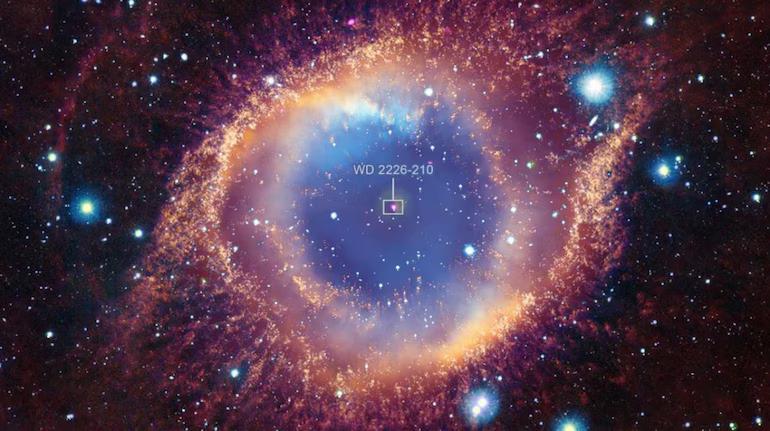
Pic shows ‘destructive’ star that destroyed planet in Helix Nebula
The Helix Nebula, a glowing shell of gas around a dying star, has long been a subject of fascination for astronomers and space enthusiasts alike. Located about 700 light-years from Earth, this stunning celestial wonder has been the focus of numerous studies and observations over the years. And now, NASA has released a new picture that sheds light on a mysterious X-ray signal that has been detected from the nebula for over 40 years.
The image, captured by NASA’s Chandra X-ray Observatory, shows a “potentially destructive” white dwarf star that may have destroyed a planet. The white dwarf star, which is the remnant of a star that has exhausted its fuel and has since died, was found to be very closely orbiting the planet it destroyed.
The X-ray signal in question has puzzled astronomers for decades, and the new image provides a possible explanation for this mysterious phenomenon. According to NASA, the close orbit of the white dwarf star around the planet it destroyed could be the cause of the X-ray signal.
The Helix Nebula is a type of nebula known as a planetary nebula, which is formed when a star similar to the Sun reaches the end of its life and expels its outer layers into space. The nebula is made up of gas and dust that is ionized by the intense heat and light emitted by the dying star.
The new image from NASA’s Chandra X-ray Observatory shows the white dwarf star at the center of the Helix Nebula, surrounded by a ring of gas and dust. The image also reveals a close orbit between the white dwarf star and a planet that has been destroyed.
The discovery of the white dwarf star and its close orbit around the destroyed planet provides a unique opportunity for scientists to study the processes that occur when a star dies and its planetary system is destroyed. The study of white dwarf stars and their planetary systems can provide valuable insights into the formation and evolution of planetary systems.
The Helix Nebula is not the only planetary nebula that has been studied by NASA’s Chandra X-ray Observatory. The telescope has imaged numerous planetary nebulae over the years, providing scientists with valuable insights into the processes that occur when a star dies and its planetary system is destroyed.
The study of planetary nebulae is an important area of research in astronomy, as it can provide valuable insights into the formation and evolution of planetary systems. By studying the properties of planetary nebulae, scientists can gain a better understanding of the processes that occur when a star dies and its planetary system is destroyed.
The image of the Helix Nebula, captured by NASA’s Chandra X-ray Observatory, provides a stunning visual representation of the processes that occur when a star dies and its planetary system is destroyed. The image shows the white dwarf star at the center of the nebula, surrounded by a ring of gas and dust. The image also reveals a close orbit between the white dwarf star and a planet that has been destroyed.
The study of the Helix Nebula and other planetary nebulae is an important area of research in astronomy, as it can provide valuable insights into the formation and evolution of planetary systems. By studying the properties of planetary nebulae, scientists can gain a better understanding of the processes that occur when a star dies and its planetary system is destroyed.
In conclusion, the new image from NASA’s Chandra X-ray Observatory provides a stunning visual representation of the Helix Nebula, a glowing shell of gas around a dying star. The image shows a “potentially destructive” white dwarf star that may have destroyed a planet, and provides a possible explanation for a mysterious X-ray signal that has been detected from the nebula for over 40 years.






